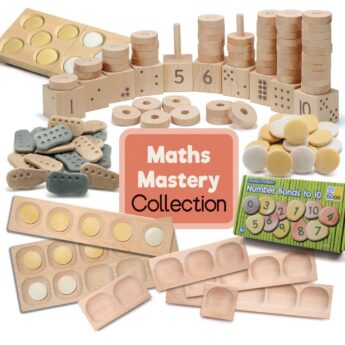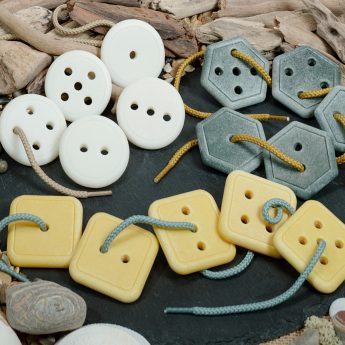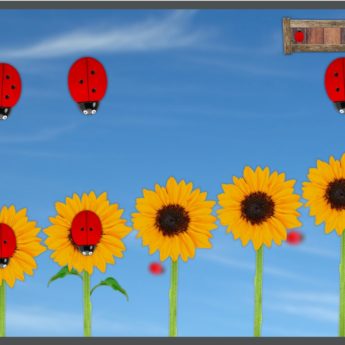What is maths mastery in the Early Years?
How do you know when a child has mastered something? When a young child is learning to walk, we would not say they have mastered walking when they take their first wobbly step. We would say ‘mastery of walking’ is when they can do it forwards, backwards, uphill, when tired, around objects, on different surfaces and holding someone’s hand. It is the same when mastering an aspect of mathematics. A child has mastered counting to ten when they have a deep understanding of the numbers to ten. This means that they understand the sequence (order), quantities, properties and relationships between numbers 0–10, and they can play around with these and use them in different contexts. It takes time to develop depth of understanding and it is important that children are provided with the time and resources to explore and enjoy number.
Developing Number Sense
A strong number sense builds a firm foundation for future maths learning as children:
- understand how many each number represents (cardinality or quantity)
- know the differences in relative size between numbers (comparison)
- understand how numbers are made up of other numbers (composition)
- make links between different representations of these numbers so that they can think flexibly about them.
Number sense is a structured understanding of numbers and number relationships, and it is vital to develop this in the early years. Children need to experience regularly both child-led exploration and adult-guided activity to help them build number sense. Children need lots of counting experiences with physical resources that they can count, group, order and manipulate.

Children develop a real feel for number by using tactile resources. Resources need to be sufficiently flexible and open ended so that children can return to them over and over, using them in different ways to represent varied problems, scenarios or relationships in mathematics. As appropriate for the individual child, children will typically work with smaller collections of items (up to three) before moving on to five and then ten. They will increasingly experiment with changing groups of objects by combining, separating, adding to and removing from. As they do this, it is important that they continue to experience zero (as they have from being a very young child) so they compare numbers to zero as well as making no change to a group (such as adding or taking 0 objects away).
Mathematical behaviours
An important element of children achieving deep understanding of numbers to ten is their attitude towards and confidence in working with these numbers. Children need to feel that they are ‘good’ with number and can find solutions, even if they find a problem initially more challenging. Effective mathematical behaviours include:
- having a go
- having another go
- estimating
- wondering
- checking
- exploring
Children need time to work things out and try their ideas, which includes trying out what will not work as well as what will.
Deep understanding of the numbers to ten can be developed through everyday activities, such as:
- exploring mathematical scenarios from stories, songs, rhymes or everyday problems, such as the number of animals in a story or the number of carrots needed for snacks.

- adding maths resources (e.g. Tactile Counting Stones) to existing areas of provision, such as dough or sand, or offering them on their own for children to explore and compare.
- utilising counting resources (e.g. 10-Frame Tray) within everyday routines, including representing how many children are present, how many children are having a school dinner or sandwiches, and how many children have had a turn on a trike.
- using resources such as the Two-Tone Counting Stones alongside songs and rhymes to represent how many currant buns, green bottles or bags of wool there are. These can effectively represent the underlying mathematical relationships, showing how quantities increase or decrease as one more is bought, falls off or is given away.

Questions to encourage and develop understanding
Asking questions can help confirm and extend the children’s thinking and understanding. Some suggestions are listed below. The numbers given are just examples, but it is important to use 5 and 10 and the numbers near to them regularly because of their importance in the number system and for future understanding of place value. Zero (0) is also very important and children need to encounter what happens when we add and subtract 0 from the numbers 1–10.
- How many?
- How many more?
- What numbers are there in seven?
- Which/who has more/less?
- Find me two/three numbers which make five?
- How can I make six? Can you make it a different way?
- What do you know about four?
- Which number goes between four and six?
- What if I take/hide three? What if I take/hide zero?
- How many are hidden? How many are left? How many altogether?
- Get me nine stones (from a larger quantity)
- How do you know you have nine?
- Find the number which means nine (the 9 numeral)
- Which number is missing? How do you know?
Activities, activities, activities
The same resources can be used in many different ways to make activities that are rich in mathematical learning opportunities. Adults support children to engage in deeper mathematical thinking through playing activities such as these with them:
- Make deliberate mistakes, such as, ‘1, 2, 3, 4, 6, 7, 8’ or count an item twice and ask the children to help you correct the errors. Children often find it amusing when adults make ludicrous errors and can demonstrate their mathematical reasoning in showing or telling the adult why that cannot possibly be correct.
- Cover up small quantities of stones or counters and show them briefly to promote subitising (immediate recognition of quantity without counting). Hide some of the items and count how many are hidden, how many are visible and how many altogether?
- Model estimation, saying how many you think there might be before counting how many there are.
- Pose ‘What if…’ questions and show that you are wondering what will happen next: ‘What if we add another three stones?
- Invent stories and use resources to represent the quantities in the story. For example, there was a bus travelling along with just the driver on board (show one stone in a 10-Frame Tray). Five passengers got on (add five more stones to the tray). Two people got off the bus at the next stop (take two stones away).

- Play simple, structured games. The Tactile Counting Stones are excellent for matching pair games. Turn over and mix up all the stones. One player turns two stones over to see if they can find a pair of the same number. If they are successful then they keep the pair of stones. If not, they get turned back over. Each player has a turn until all stone pairs have been claimed. The winner is the player with the most stones. This game requires memory and lots of counting.
- Use the 10-Frame Tray and Two-Tone Counting Stones to play a simple game. Each player places one or two stones in the frame on their turn. The winner is the player who places the tenth stone in the frame. This game requires strategy.
These ideas are taken from Developing Number Sense: Early Years Maths Mastery Collection – guidance leaflet available with our Maths Mastery Collection – written by Dr Catherine Gripton, early years and mathematics specialist.
 See our full range of resources for Maths Mastery
See our full range of resources for Maths Mastery

 Register/Log in
Register/Log in
 Basket
Basket



